Brad Bannon and Christine Mumma, defense attorneys for Christopher Bryant and Rayshawn Banner, respectively, give an interview after the first day of the hearings. Mark Rabil and Julie Boyer (not pictured) represent Jermal Tolliver and Nathaniel Cauthen, respectively.
‘Winston-Salem Five’ seek exoneration
An innocence hearing is underway for four of the five men convicted of murdering a Winston-Salem man 20 years ago
April 24, 2022
Four men are seeking to be exonerated of the 2002 murder of Nathaniel Jones, Winston-Salem native and grandfather of NBA star and former Wake Forest guard Chris Paul. A three-judge panel will be hearing arguments from the men’s attorneys concerning whether they are innocent and must come to a unanimous decision to grant an exoneration.
Fifteen-year-olds Christopher Bryant, Nathaniel Cauthen, Jermal Tolliver and Dorrell Brayboy and 14-year-old Rayshawn Banner, Cauthen’s brother, were arrested for Jones’ murder in 2002. The group has been referred to as the “Winston-Salem Five” because of the striking similarities between this case and the infamous “Central Park Five” case in New York City.
Cauthen and Banner are currently serving life sentences on first-degree murder convictions. Bryant, Tolliver and Brayboy were convicted of second-degree murder, but have all been released since 2018.
Bryant first submitted an innocence claim to the N.C. Innocence Inquiry Commission on March 2, 2015. Cauthen was the second defendant to file an innocence claim three years later. Tolliver and Banner were notified of the filings in October 2019. Brayboy was not contacted due to his death in August 2019, and he cannot be posthumously exonerated since he did not submit a claim of innocence before his death.
Since its inception, the Innocence Inquiry Commission has received a total of 3,206 claims. Fifteen of the 18 claims that have received hearings have resulted in exonerations, and the still-living members of the Winston-Salem Five hope their case will be the 16th.
No forensic evidence could link any of the five defendants to the crime, but confessions from the teenagers and 16-year-old Jessicah Black, an alleged accomplice, determined their fates.
But defense attorneys pointed out in their opening statement Monday morning that these confessions do not add up.
This is a developing story. Updates and continual coverage will be available here.
Correction April 21: An earlier version of this story erroneously implied that all four men are represented by the N.C. Center on Actual Innocence. Only Banner is currently represented by them; however, the attorneys are all working together.
Day Five
Day five of the murder innocence hearing of the “Winston-Salem Five” finished with the testimonies of defendant Jermal Tolliver and key witness in the original trial Jessicah Black — an alleged accomplice of the teenagers on the night of Nathaniel Jones’ murder.
Julie Boyer, the attorney representing Nathaniel Cauthen, questioned Black. Black, 36, was 16 at the time of the murder. Black remembers telling police officers during their interrogation of her what she was doing on Nov. 15, however, they would counteract each of her statements with accusations that she was lying. She also said that the police threatened her by saying they could put her in prison or convict her of murder at any time. She said she eventually just started telling them what they wanted to hear so she could go home.
She testified at the 2004 and 2005 trials with the statement she gave police but has since recanted that testimony. Now, she has an entirely different story of that night than what she told police back in 2002. This account, she says, is the truth.
Black was aware that she was putting herself at risk of perjury for recanting her statement and testifying in the hearing, but when asked by Boyer why she was here, she answered: “to get the truth out.”
On the night Jones died, Black says she picked up the teenagers from their neighborhood to just drive around — an activity they did frequently after school in the early afternoon, often while smoking marijuana. Black said they spent the rest of the day together.
While her memory is hazy on who exactly was hanging out together that night, she says at least some combination of the four defendants were there. She is confident that Cauthen was present, as the two of them were especially close and spent the most time together.
Black is also unsure of the exact timeline of that night, in terms of where they stopped and when.
One of the stops they made was at Hanes Mall. She said that she and the boys split up when they arrived at the mall. She went to visit a friend who worked at one of the stores and the boys went off to do their own thing.
Black and the boys also stopped at Creekside Lanes Bowling Center. Black said they weren’t there for long because they left after one of the boys got into a verbal altercation with a police officer.
After leaving the bowling alley, Black testified that she returned to Moravia Street to take the boys home. Upon arrival, she said they saw several police cars and yellow crime scene tape surrounding Jones’ home. She added that they got out of the car to figure out what had happened, and then they all returned home.
Within the next few days, police officers came to Black’s home to confiscate her car as evidence, and then she was also brought into the police department for questioning.
Black described her interrogation as her “guessing” about the details of different aspects of the crime, like what object the boys hit Jones with or what color tape they used to bind Jones.
“I finally got it right,” Black said in reference to the story police finally accepted before releasing her.
Black said she had never been questioned by the police before and was unsure of her rights. While she said she was never threatened with the death penalty, she also said that the police did tell her that she could go to jail for life and could be convicted of murder at any point in time. She testified that the police never asked her if she would like her parents present or read her Miranda rights to her. Black said that she stayed in the interrogation room the entire time she was at the police department and was not aware she could leave.
Black became emotional on the stand as the defense recalled what she had told police in 2002 and what she had said under oath at the trials. It wasn’t until the North Carolina Innocence Inquiry Commission hearing that Black realized that the Air Force 1 shoe print and what she admits was a false testimony were the only pieces of damning evidence the prosecution had against the defendants. The discrepancies between what the police told her and the actual evidence of the case have only just been revealed to her in the past two years.
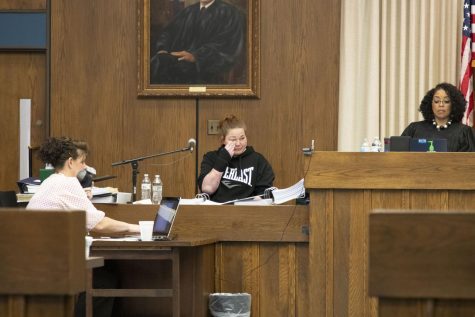
“You think about stuff like that,” Black said through her tears. “It weighs on your mind, and it weighs on your heart.”
The defense also questioned Black on her interactions with Hunter Atkins — a sports reporter for the Houston Chronicle who conducted interviews with Black and ultimately led her to recant.
Atkins persistently tried to contact Black for a couple of years. Black said that after Atkins explained the angle of his story — that he was trying to put a positive light on a tragic situation — she finally agreed to meet with him.
Black testified that They met for the first time at an IHOP in Winston-Salem, and Atkins informed her of facts of the case that she didn’t know. Black said that after Atkins revealed to her how she had been deceived, she told him that everything she had said to the police and under oath was false.
Black also touched on aspects of her relationship with Atkins that have raised concerns, such as allegations of him bribing her. Black testified that Atkins never bribed her to make a certain statement or change her story.
A couple of years ago, when Black had lost her job and home and was living out of her car, Black said Atkins paid her car payment, but that it was after she had recanted her testimony to him.
“He just helped to help,” Black said during the hearing.
Black said the two have not been in contact since.
In their cross-examination, the Assistant District Attorney Jennifer Martin inquired about inconsistencies in what Black had just testified and her earlier testimonies at the Innocence Inquiry Commission hearings.
At the hearing Friday, Black said she smoked marijuana as a teenager but did not experiment with cocaine until she was 30 years old. She had told a commissioner with the Innocence Inquiry Commission that she was 28 years old.
Another detail Martin inquired about was which store in Hanes Mall Black said her friend worked at. On Friday, Black said she visited her friend at Hot Topic; however, Martin pointed out that there was no Hot Topic at Hanes Mall in 2002. Black persisted that whether or not it was Hot Topic that her friend worked at, she did go visit her friend.
Martin also asked Black about her claim that she wasn’t in Belview Park on the night of the murder. Cauthen had previously testified that he and Black had oral sex in Belview Park. Black said she had performed oral sex on him but not on Nov. 15.
The state was not able to finish their cross-examination of Black before the court adjourned at 1 p.m. on Friday.
Day five also included the state finishing their cross-examination of Tolliver that they began the previous day. Assistant District Attorney James Dornfried questioned Tolliver mainly on the events on Nov. 15.
Dornfried pointed out that Tolliver never implicated himself in statements he made to police as he only made statements about what the other teenagers did that night and only described himself as the “lookout”.
Throughout his testimony, Tolliver expressed his frustration at the fact that his testimony to police in 2002 does not match what he says to be true now.
“That doesn’t mean it was true,” Tolliver repeated in response to Dornfried as he quoted Tolliver’s statement to police in 2002.
The hearing will continue next week, and Black is expected to still be on the stand. The other three defendants are also expected to testify.
Day Four
April 21 marked the fourth day of the exoneration hearings for the “Winston-Salem Five”.
This day centered largely around the defense’s claim that the confessions given to police by the defendants were false.
The Morning
To illustrate that point, the defense relied on the testimony of Dr. Hayley Cleary, a psychologist whose research centers around false confessions. Attorney Brad Bannon asked the questions for the defense.
According to Cleary, the confessions of the defendants were not consistent. However, as is standard for an expert witness, she did not assert that the confessions were false.
“There were extraordinary inconsistencies [between the confessions] and the physical evidence,” Cleary said.
Cleary was also shown clips of the defendants’ confessions and testified that the police officers’ tone and forcefulness may have caused the defendants to confess. However, the only parts of the interrogation that were recorded were the eventual confessions, as the officers did not record before then.
Cleary, who agreed with the assessment of day two and three witness Dr. Ginger Calloway that some of the defendants were intellectually disabled, testified that intellectual disability increases the likelihood of false confessions. She added that adolescence also increases this likelihood. This is because, according to Cleary, false confessions can come about when those being interrogated are more suggestible — that is, inclined to agree with authority — and research shows that adolescents and intellectually-disabled people are more likely to be suggestible.
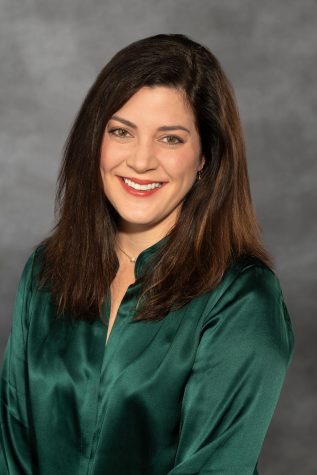
Another reason why false confessions may come about, per Cleary, is if the person being interrogated feels they are in danger and can best get out of the situation by fabricating a confession. Cleary referred to the techniques interrogators use to create this sense of danger as “maximization techniques”. When asked about the fact that police threatened the young men with the death penalty during an interrogation, Cleary said that the threats likely increased the possibility of false confession.
“References to the death penalty are the most coercive maximization tactic there is,” Cleary said.
Cleary was also asked questions about perceptions of custody in youth and if innocent people are likely to give false confessions.
“Factually innocent people are more likely to get themselves into legal jeopardy,” Cleary said.
On cross-examination, the state asked Cleary if she had reviewed records of the defendants’ prior encounters with police. Cleary said she had not. On a follow-up question, the state asked Cleary if she reviewed instances where the defendants had, prior to November 2002, exercised their rights not to speak to police, which indicated they knew they could do so. Cleary said she had not. They also asked if the studies about false confessions being more prevalent in adolescents included youth in Cook County, who were tortured by police to elicit confessions in an extraordinary case.
Cleary said that within the world of psychology, the fact that police interrogations are guilt presumptive is “common knowledge”, with the true purpose being to gain a confession, not to gain additional information pertaining to the case.
The state also asked Cleary about the influence of setting or parental presence, to which she responded that both can have negative and positive impacts on false confessions.
“It depends on the child’s relationship with the parent,” Cleary said.
When asked if these five teenagers’ confessions were in fact false, Cleary said she would not be able to make that assessment and that it was the judge’s decision to make.
The Afternoon
After Cleary, the first of the four defendants took the stand. Jermal Tolliver was questioned by his attorney Mark Rabil, director of the Wake Forest School of Law Innocence and Justice clinic. Rabil was the defense attorney for Darryl Hunt, who served a 19-year-long prison sentence after being wrongfully convicted of murder and was exonerated in 2004.
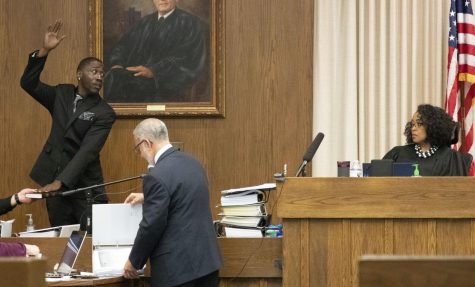
To begin Tolliver’s testimony, Rabil asked his client if he had any involvement in the murder of Nathaniel Jones, knowledge of Jones before Nov. 15, 2002, or any information on who killed Jones. Tolliver denied all. Rabil then asked for Tolliver to give some background on his relationship with co-defendant Christopher Bryant.
Tolliver had been expelled from school earlier that month. Many of his days were spent across the street at Bryant’s house working on and riding bikes as well as smoking marijuana. Tolliver said he was friends with Rayshawn Banner, Nathaniel Cauthen and Dorrell Brayboy but hung out with Bryant more often, calling Bryant his best friend.
Nov. 19, 2002, was not Tolliver’s first run-in with law enforcement. Tolliver had to go to juvenile court “three or four” times before and the juvenile detention center twice, once for 24 hours and the second for three days. Most times when he was caught stealing from the nearby convenience store, the store owner would call the police, who would then talk to Tolliver’s mother. Tolliver would always go home and he expected it to be no different when he was taken downtown to the Public Safety Office on Nov. 19.
Rabil asked Tolliver to recall what he was doing Nov. 15, 2002, the day of Jones’s murder. As he would repeatedly say throughout his testimony, Tolliver could not recall many of the details of that day given that it was nearly 20 years ago, but he did remember generally the day’s events.
Tolliver was at the Bryant house watching a movie, and at one point they walked to the store. The two were planning on going to Hanes Mall, but it had started raining. Later that night, 16-year-old Jessicah Black picked the two up, as well as Cauthen and a person named Jed, to go bowling at Creekside Lanes.
First, they were going to stop at Black’s grandmother’s residence in Clemmons, but as they were driving by Moravia Street, they saw a crowd of people surrounding flashing lights. They parked the car and walked over to the scene, asked what had happened and learned that someone was killed. They returned to the car, went bowling and Tolliver returned back home “around 10 or 11 p.m”.
Four days later, detectives David Rose and Sean Flynn appeared at the Tolliver home. Arlene Tolliver, his mother, had called the police saying that her son had been acting strange since Jones’s murder and that he might know who did it. To Jermal it was unclear what they wanted to talk about, but they did not want to talk at the house.
Jermal was escorted to an unmarked police vehicle and taken downtown, where he was placed into an interrogation room alone for about 5-10 minutes. Jermal said it felt like a while, but also mentioned that a few hours prior, he had smoked “a nice one” with Bryant, which most likely affected his sense of awareness. When asked by Rabil about his alertness and abilities during the beginning of the interrogation, Tolliver responded “oh, I was high.” Jermal did not remember if his Miranda Rights were read to him.
Jermal said the detectives did not believe what he was saying about not being involved so after about an hour and a half, Jermal mentioned that he had thrown Jones’s wallet out the window of a bus near the McDonald’s on Hanes Mall Circle.
“I thought that’s what they wanted to hear because they didn’t believe I was telling the truth,” Jermal said.
At this point the police took Jermal to the area he claimed he threw the wallet. He sat in the back of the car eating fries and soda while police searched for nearly an hour. At no point was Jermal asked to point out any specific area. When the police returned to the car, Jermal noted that they were angry at him.
Jermal was taken back to the interrogation room where he was met by two different detectives. They said that Jermal’s friends told police that Jermal was involved with Jones’s murder. They also relayed a message from Arlene telling her son to tell the truth. Jermal was not in direct contact with either his friends or his mother. Police showed Jermal a statement of confession from Bryant and at this point, Jermal was contemplating confessing.
“I felt like no one would believe me anyway,” Jermal said. “I just wanted to go home.”
Jermal did not confess to the murder of Jones until Det. Flynn had threatened the fifteen-year-old with the death penalty — a punishment not allowed for juveniles in the state of North Carolina.
“I don’t want to die,” Jermal said. “I’d tell them whatever they wanted to hear.”
The police would record Jermal’s confession, a recording he would not hear until April 20, 2022. He says he sounded scared and tired as it was around 11 p.m.
Before cross-examination began, Jermal turned to the judge’s panel and said “No matter how this turns out, I want you to know that I am innocent.”
Assistant District Attorney James Dornfried asked questions for the prosecution. He asked Jermal about a statement from his brother Thayers Tolliver. When Thayers asked Jermal about Jones’s murder a few days after at their home, Thayers claimed that Jermal confessed. Jermal denied this interaction. Dornfried asked about another statement from one of Jermal’s sisters, Yolanda Tolliver, in which Yolanda claimed that she overheard Jermal speaking with Bryant and Cauthen about “robbing the old man’s house”.
“She said a whole bunch of stuff that wasn’t true,” Jermal said.
Dornfried then questioned Jermal about his use of marijuana, questioning if he truly was still high two-and-a-half hours later if he had been a regular user for the previous four years. Jermal insisted that he was still high when being interrogated.
Jermal did not testify in 2004 or 2005 because his counsel at the time, Clark Fischer, advised him not to. Dornfried questioned why Jermal would not take the stand if he truly believed he were innocent, and Jermal maintained that he was doing what his lawyer said to do.
Rabil believed that the state’s cross-examination of his client reinforced Cleary’s testimony from that morning.
“I tried to question him in sort of simple terms, one thing after another,” Rabil said. “Whereas the district attorney, it seems to me, is sort of proving what really happened here with the cops interrogating all these guys. They’re not graduate students, they’re not lawyers…they just try to trip them up.”
The state’s attorneys declined to comment.
The First Few Days
Over the course of the first two days, the defense called three witnesses to the stand. Only two of the three were able to be cross-examined by the state before 5 p.m. on Tuesday.
Julie Bridenstine, staff attorney for the N.C. Innocence Inquiry Commission and the lead investigator on Bryant’s claim-of-innocence case, was the first to be called to the stand. Bridenstine would remain under oath for nearly five hours, both Monday afternoon and Tuesday morning.
The defense’s questioning of Bridenstine provided a preliminary understanding of the original investigation in terms of suspects, evidence, eyewitness interviews and leads from Nov. 15-19, 2002 — the day of Jones’ murder to the day of the five arrests. The defense also inquired about what investigating Bridenstine and the Inquiry Commission completed from Feb. 2016 to March 2020.
When asked about Jones’ Lincoln Town Car, Bridenstine said that before Jones was discovered to be dead, a friend had driven by the house and noticed Jones’ Lincoln parked in the carport with the brake lights on and a man in the driver’s seat. Because of the sunset, the eyewitness could not make out any details but could determine it was not Jones, as the man’s figure was too small. They had presumed it was one of Jones’ grandsons and drove away. Bridenstine testified that the police report stated the interior of the Lincoln was forensically processed, but testimony from the trial said otherwise.
Bridenstine also focused on forensic evidence, noting that partial DNA profiles were created based on DNA found on a piece of black tape. The DNA could not be identified, but it did not correlate with any of the five teenagers. When tested again in 2020, the defendants were still excluded from the DNA.
Black’s car, which was allegedly used as the getaway car, was tested for blood and no traces could be found.
Bridenstine also said that there were a few suspects that the WSPD had been notified of either through interviews or Crime Stoppers tips, but once the teenagers were arrested on Nov. 19, all other investigations ceased. Bridenstine attempted to contact at least three of the alternate suspects when she was doing her investigation but did not receive any new information.
The defense also asked about an eyewitness report from 10-year-old BJ Lowery, who claimed to have seen a Hispanic male dressed in black, wearing a tobaggan hat and gloves, jump over Jones’ fence. The first report notes that the child said it was 5:59 p.m., whereas during trial, Lowery is on record as saying it was closer to 7:50 p.m. — a substantial time difference.
Bridenstine testified that Lori Douglas, Lowery’s mother, was hosting a birthday party at the time when her son came into the house saying he had seen something. Douglas said Lowery had notified her between 6:30-6:40 p.m. — the same time frame as Jones’ death. The defense said that this suspect description was eliminated for unexplained reasons.
When the state had the opportunity to cross-examine, they asked if Douglas was under oath when she clarified the time. She was not. The prosecution repeatedly asked Bridenstine if she had thoroughly explored all the possible avenues of the investigation. She maintained she had.
Three exchanges between the defendants, relatives of the defendants and counsel were introduced as evidence by the prosecution. One of those was a memo written by N.C. Center on Actual Innocence attorney Cheryl Sullivan summarizing a phone call between her and Nils Gerber, who represented Bryant in the original trial. The memo said that Gerber believed all five of the teenagers were guilty of murdering Jones, saying that while the confessions may have been coerced by WSPD officers, they were “still truthful”.
The defense added that Gerber would later dispute telling Sullivan about any opinions of guilt.
Around 11:45 Tuesday morning, William Bodziak was called to the stand as an expert in footwear impressions. Bodziak worked in forensics for the FBI for nearly 25 years before starting a forensic consulting business in Jacksonville, FL. He also testified in the famous trial of O.J. Simpson. He estimated that he had testified more than 500 times and that three-quarters of those testimonies pertained to footwear impressions.
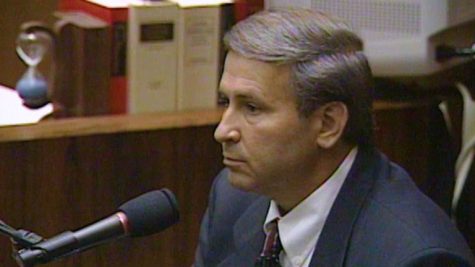
Two partial shoe prints were found on the hood of Jones’ Lincoln Town Car and were identified to be the soles of a size-nine Air Force 1 shoe.
Investigators had seized a pair of size-nine Air Force 1s from the home of Cauthen and Banner, claiming that these were the shoes that left a print on the hood of Jones’ car. But Bodziak would later testify that it was erroneous for the police to use partial impressions of one of the most common shoes in the U.S. as the sole piece of forensic evidence linking the teenagers to the murder.
“There is nothing special about the wear,” Bodziak said, referring to scuffs and tread on the bottom and sides of the shoe. “To use these features and infer a connection is misleading.”
Bodziak was also reluctant for both sides to use the word “match” in reference to any connection.
“Once the word ‘match’ is used in a courtroom, you don’t know what that means to people,” Bodziak said.
“Corresponds” is the preferred terminology — but with partial impressions showing general wear, Bodziak said a correspondence would be far from absolute.
The final witness of the day was Dr. Ginger Calloway, a forensic psychologist with more than 30 years of experience in the field of developmental psychology. When questioned by the defense, she defined what intellectual disabilities (IDs) are and outlined the three-pronged test used to determine them. Calloway emphasized that the test data was conclusive, using multiple sources from multiple examiners.
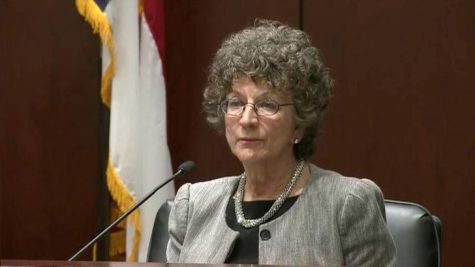
“You wouldn’t rule out or rule in ID based on one piece of data,” Calloway said.
The psychological assessments she discussed included — but were not limited to — standardized tests such as IQ tests, the Woodcock-Johnson test, the CAT and WRAT tests.
When asked for her opinion, Calloway affirmed that, based on case records — including her own psychological assessments — each of the five teenagers was cognitively impaired at the time of interrogations in 2002. Her findings supported the defense’s claim that the boys were more likely to make false confessions based on their age and mental impairment.
The prosecution, as of 11:00 a.m. Wednesday morning, cross-examined Calloway regarding the thoroughness of her investigation and the impact the defendant’s many absences from school may have had on their capabilities. The hearings will last the remainder of this week and are likely to continue into the next.
Opening Statements
In their opening statement, the defense presented that all five defendants and Black had differing accounts when asked questions about who was involved, what the motive was, how Jones was approached, what items were used in the attack and the state of Jones’ body.
One confession claimed the teenagers used black electrical tape bought from a nearby Dollar General to bind Jones’ hands and cover his mouth. However, the defense found that Dollar General did not sell the tape that was found at the crime scene, nor did surveillance footage at that store show any of the teenagers near the property. Another confession claimed that the teenagers stole and then used Jones’ debit card, however, no card activity was found. Another confession claimed that Jones was left lying on his back with his eyeglasses nearby. Jones was actually found lying on his stomach and no eyeglasses were found at the scene.
In his opening statement, Brad Bannon, one of the defense attorneys, stated that the Winston-Salem Police Department (WSPD) intimidated the teenagers into falsely confessing, citing the lack of incriminating evidence and their maintaining of innocence since the 2004 and 2005 trials.
All five defendants would later recant their testimonies, and, in 2019, Black recanted her testimony saying that none of the teenagers or herself were involved in the crime.
At the hearing, the defense outlined three categories of risk factors that lead people to make false confessions. They say all three categories — dispositional, situational and miscellaneous — were present during the interrogations.
The dispositional risk factors that applied to the defendants were their juvenile status and mental impairment. The situational factors included placing the teenagers in solitary spaces, screaming at them and openly wearing firearms in the interrogation room.
Perhaps the most damaging of the situational factors was the WSPD intimidating the teenagers with false punishment. Police officers threatened the teens with the possibility of the death penalty if they did not tell the truth; however, juveniles could not receive the death penalty in North Carolina in 2002. This is still the case now. The defense argued that this intimidation tactic proved to be successful, as none of the teenagers confessed to anything until they were presented with the possibility of capital punishment.
Finally, the defense presented other factors that lead to false confessions like assumption of guilt and confirmation bias, which were evident through the investigators’ failure to follow up on multiple leads and tips once they brought the five teenagers into custody.
The defense concluded their opening statement by saying that they do not have to prove whether or not there was ineffective assistance of counsel or who the true perpetrator was but simply whether or not there is sufficient evidence to prove these four men innocent.
“We do not prioritize the finality of a conviction over the innocence of the convicted,” Bannon said to round out his opening remarks.
The state responded to the defense in their opening remarks given by Forsyth Co. Assistant District Attorney Jennifer Martin (Wake Forest School of Law ‘96).
One of their main rebuttals was the fact that the teenagers maintained their statements even when they were not being coerced in trial or in conversations with their attorneys. Additionally, she reminded the judges of the teenagers’ extensive history with law enforcement — the five of them had a combined 140 interactions with law enforcement before Nov. 15, 2002.
“The checks and balances were in place for these defendants,” Martin said in response to the defense’s claim that capable attorneys were not provided to the defendants.
Martin also claimed that the reporter to whom Black recanted her testimony — Hunter Atkins of the Houston Chronicle — before recanting under oath, had harassed numerous witnesses and offered bribes to eyewitnesses and defendants. Martin also stated that the reporter had given Black false information about the case in order to elicit the recanting.
If one thing was clear from Martin’s opening statements, it was the fact that the state believed there was no “factual evidence of [the defendant’s] innocence”. In 2020, there was a hearing conducted by the Innocence Inquiry Commission that determined there was sufficient evidence of factual innocence to merit an exoneration hearing by a three-judge panel.
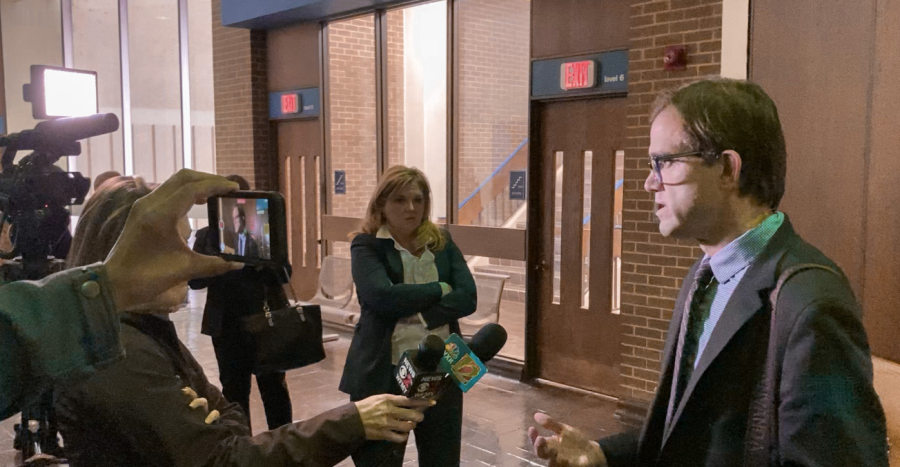
Teresa Ingram • Sep 12, 2024 at 10:41 pm
e forest, not 24 hrs. later Mr. Jones was dead